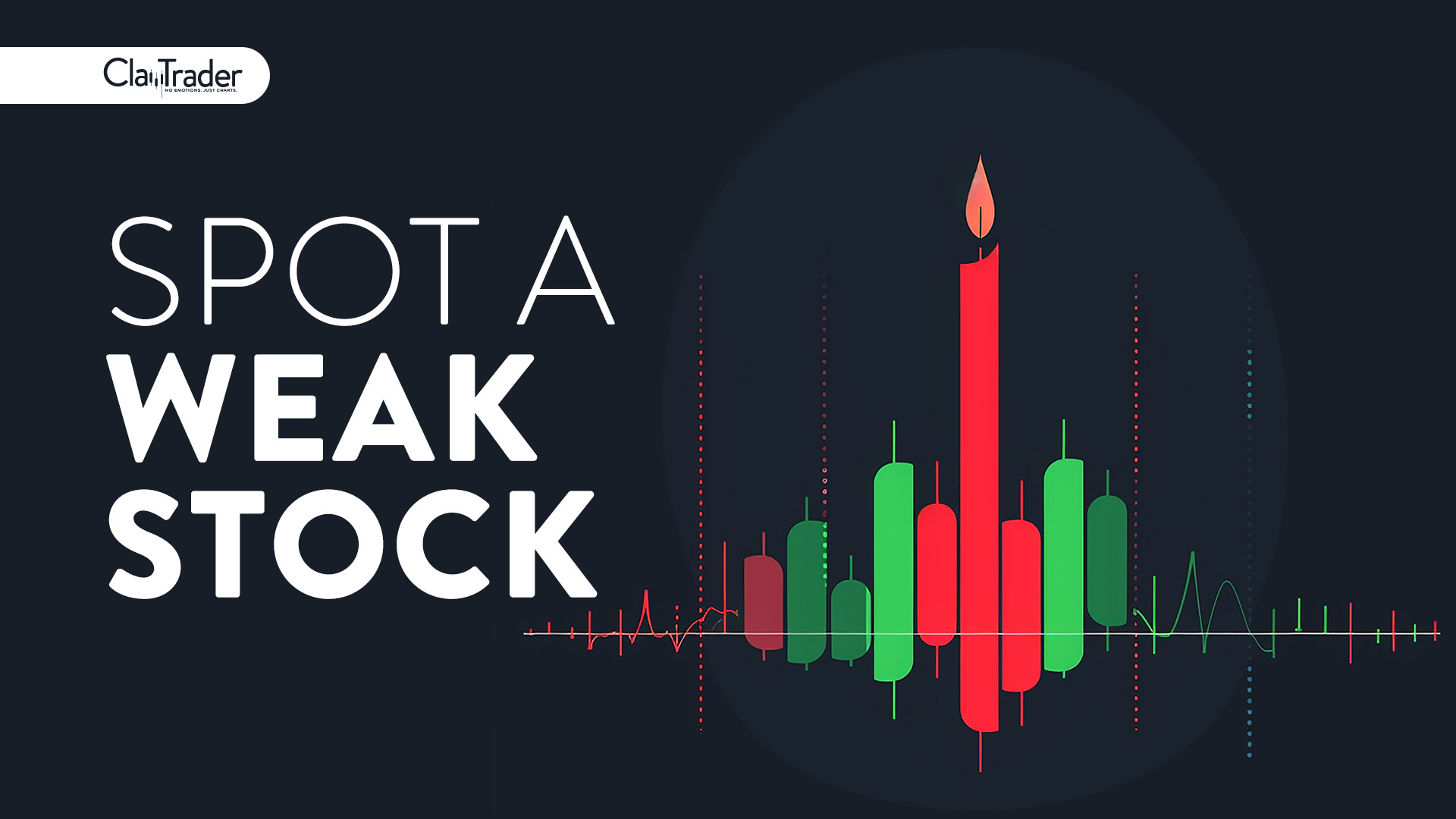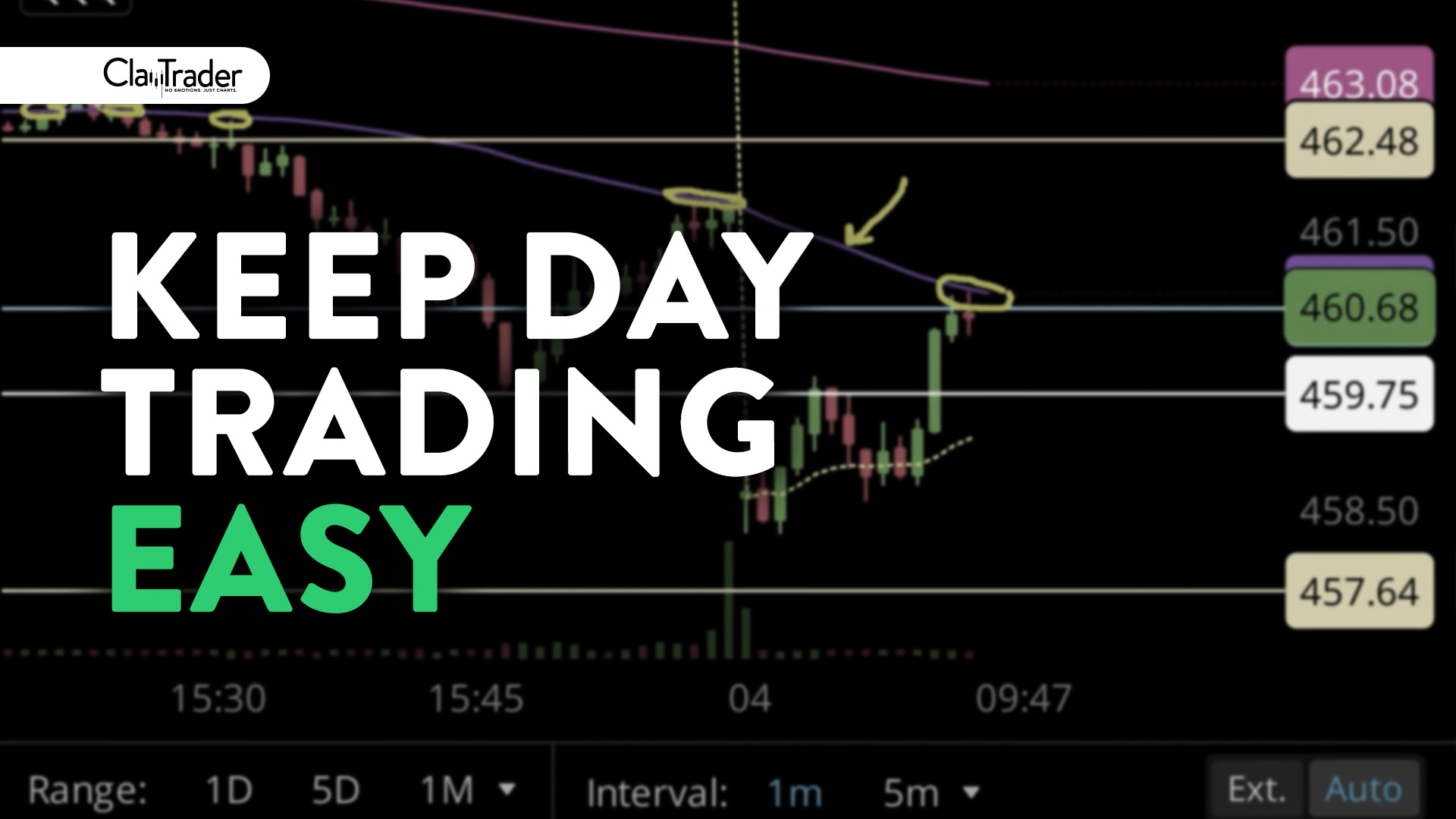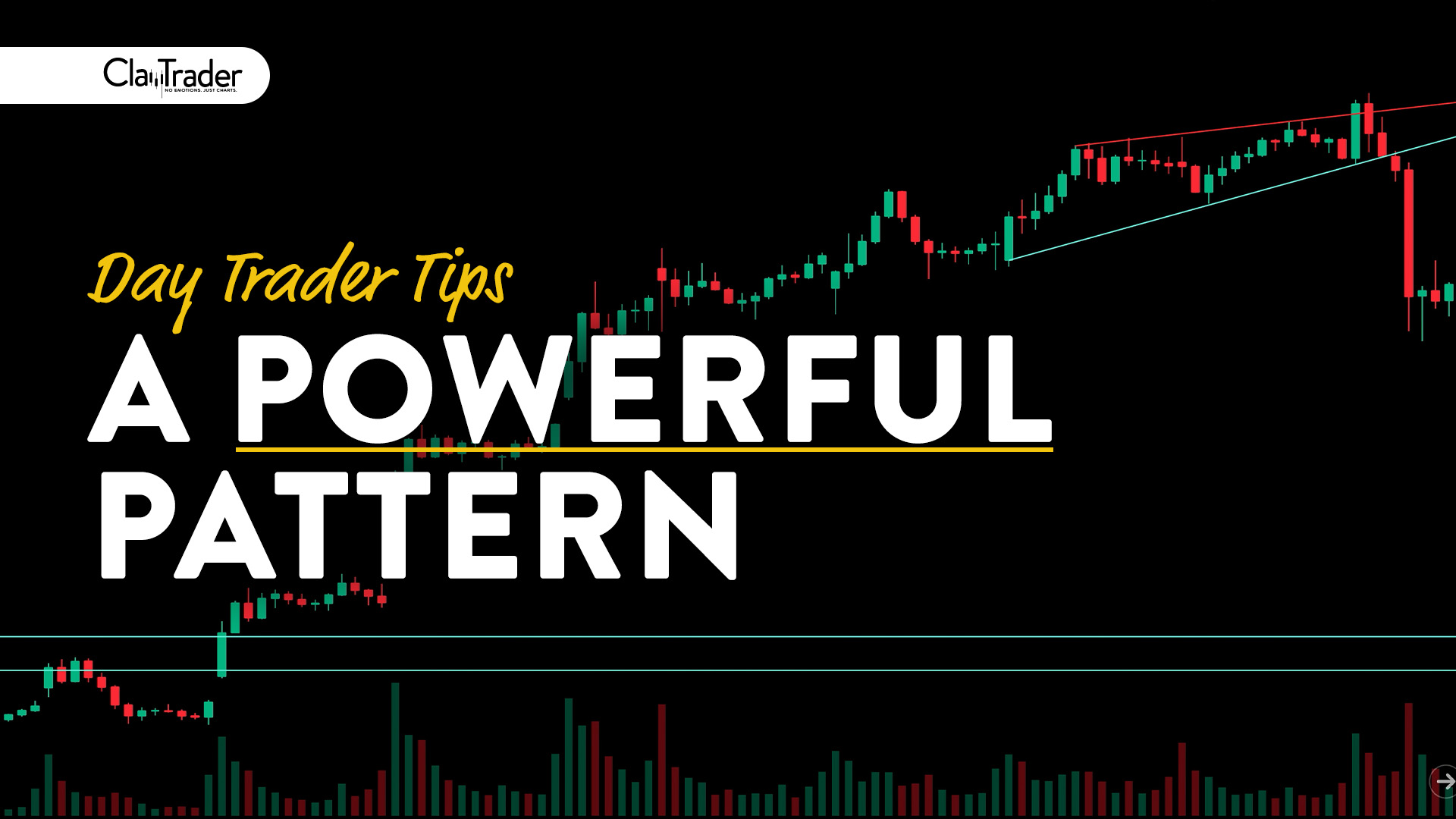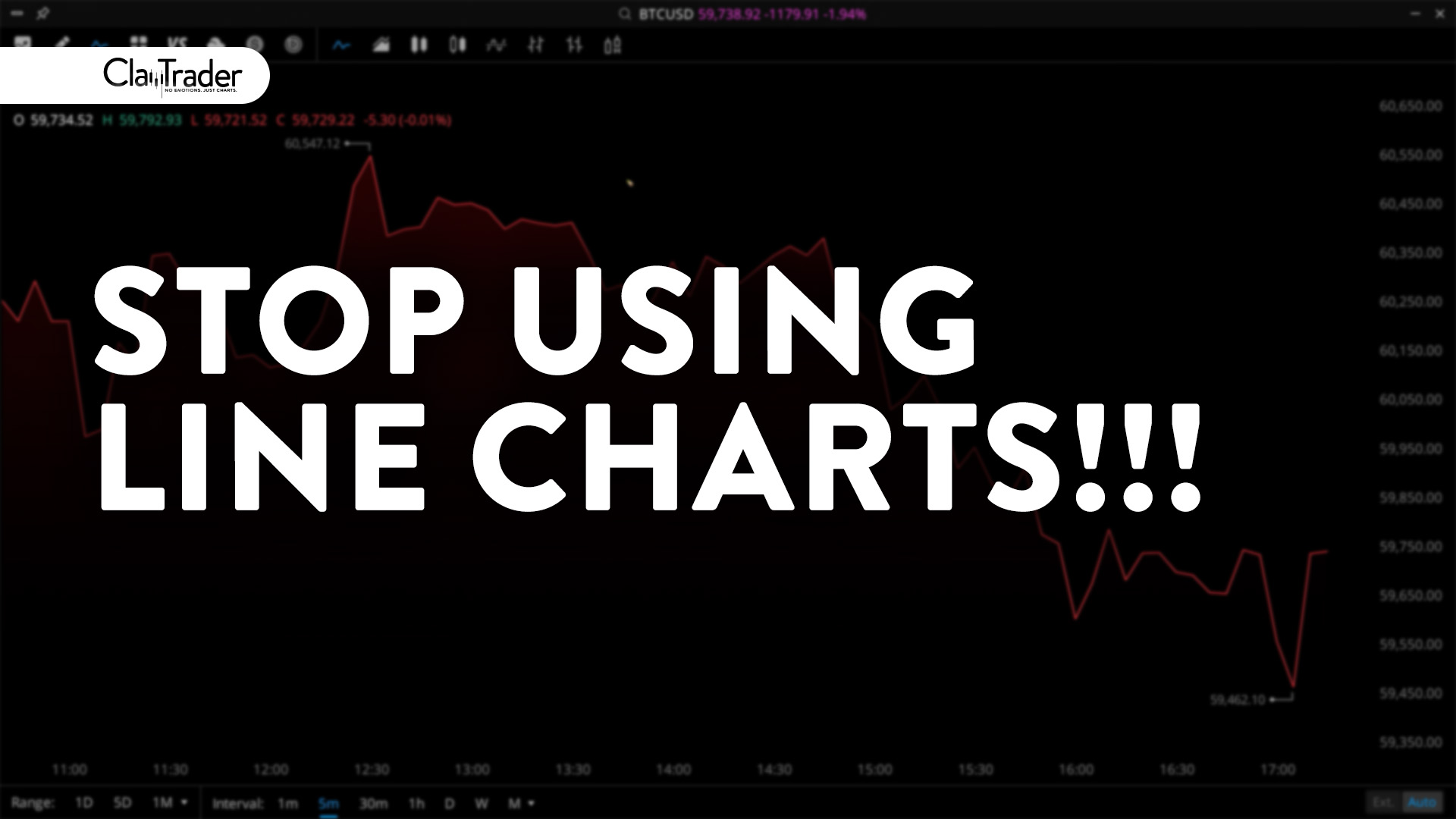Discover Learn To Trade Stocks and Options
Learn To Trade Stocks and Options

Learn To Trade Stocks and Options
Author: ClayTrader
Subscribed: 4,337Played: 155,623Subscribe
Share
© Copyright 2015 . All rights reserved.
Description
Learn how to trade stocks and options with these simple to follow videos hosted by ClayTrader. Breaking down all aspects of trading and technical analysis.
519 Episodes
Reverse
In this video, I explain how to identify weakness in a stock using candlestick charts, focusing on the significance of long upper shadows. We begin with a technical overview of candlestick components—bodies, upper and lower shadows—and how they represent price movements within a specific time frame. I illustrate how a long upper shadow indicates that although prices reached a high point, they did not sustain, signaling potential weakness. By recognizing this pattern, I demonstrate through a real trade example how I made $500 in five seconds using options trading. We explore how this method applies not only to stocks but also to options, futures, and cryptocurrencies. Understanding this concept can enhance your trading strategies and decision-making processes.
In this video, I discuss the concept of online day trading as a potential side hustle to generate additional streams of income. While I emphasize that day trading may not be for everyone, I provide insights into my own trading results and the time commitment involved. I explain how it's possible to achieve meaningful results in as little as one hour per day, with an example of earning $500 in just 18 seconds. However, I also stress the importance of hard work, strategy development, and realistic expectations, as this is not a "get rich quick" method. I demonstrate a live trade and offer a resource to help you build a strong foundation in trading, particularly focusing on day trading options. My goal is to provide the information needed to help you decide whether this side hustle is right for you.
In this video, I review and evaluate Webull’s technical charting platform, which I’ve been using for nearly a year. I focus on how the platform's free charting tools can be effectively utilized to develop trade strategies without the need for expensive software. Throughout the video, I walk through several trades and explain how the platform supports my trading decisions, demonstrating results from trades that generated significant returns in just seconds. Although I am not claiming that using Webull will guarantee similar profits, I highlight that these tools have worked well for me in developing successful trades. This review is meant to offer insight into whether the Webull platform’s charting features are visually and functionally appealing, so you can decide if they meet your needs.
In this video, I explain how to simplify day trading by utilizing a basic strategy that revolves around the 50-period simple moving average (SMA). While this strategy doesn't guarantee profits, it helps prevent the common pitfalls of over-complication and analysis paralysis. By focusing on a straightforward approach, I show how the 50-period SMA can serve as a reliable tool for identifying potential resistance and support levels in price movements. I walk through a live trade, highlighting the simplicity of my strategy and how I made $500 in just 24 seconds by leveraging the rejection of price at the 50-period SMA. The goal is to provide you with an easy-to-follow method that can give you an edge in your trading without overwhelming you with excessive indicators or analysis. I encourage you to consider integrating the 50-period SMA into your trading strategy and to share your thoughts or experiences in the comments.
In this video, I address the common issue of burnout among beginner traders, particularly in the context of social media's influence on trading expectations. Through my personal experiences with day trading and YouTube commentary, I emphasize the importance of aligning expectations with the reality of trading. I use real examples from my live trading videos to contrast entertainment-focused content with educational and realistic footage. The goal is to help viewers understand that successful trading requires patience, adjustment, and a firm grounding in realistic expectations, rather than simply seeking fast profits.
By examining a specific example of a $500 trade in just 54 seconds, I illustrate how this outcome is often the result of tedious adjustments and cancellations that are rarely shown in highlight reels. This reinforces the necessity of understanding the full process of trading, not just the final results. My aim is to provide traders with a more balanced perspective, reducing the risk of burnout by fostering realistic, experience-based learning.
In this video, I share a personal experience with Spectrum's customer service, highlighting the challenges I faced while attempting to cancel my service. The experience raises concerns about the transparency and efficiency of their customer support processes. I recount the steps I took, from initially canceling the service to discovering that my account remained active, and the subsequent attempts to resolve the issue. The video emphasizes the importance of being vigilant when dealing with service cancellations and advocating for yourself when discrepancies arise. I hope this account serves as a valuable lesson to others who might face similar situations.
In this video, I explore the technical nuances of the rising wedge pattern, a crucial tool for traders aiming to anticipate price pullbacks and avoid false breakouts. The rising wedge, although counterintuitively bearish, serves as a signal to remain patient during market surges. By analyzing Tesla's stock, I demonstrate the practical application of this pattern, documenting its predictive power and limitations. My analysis underscores the importance of understanding market patterns to enhance trading decisions, emphasizing that no pattern guarantees success but instead offers a probabilistic edge in trading. I encourage you to study this pattern further on your chosen charting platform to see how it plays out in real market conditions.
In this video, I address two common mistakes that many beginner day traders make. The insights shared come from a real conversation with a fellow trader who, like many beginners, faces challenges that are rooted in a lack of understanding of the nuances of trading. The first mistake revolves around the misconception that accumulating enough capital to bypass the Pattern Day Trading (PDT) rule will solve all trading problems. I discuss alternative strategies, such as futures trading, which is not restricted by the PDT rule, but emphasize the importance of discipline and proper strategy before considering such options. The second mistake concerns the confusion between trading and investing mindsets, particularly the flawed logic of holding onto a trade with the expectation that "it will go back up," which is a strategy suited for investing, not day trading. Throughout the video, I aim to provide clarity on these issues, helping traders to separate these categories and adopt the right mindset for successful day trading. My goal is to ensure that your foundation is solid, as a faulty foundation leads to faulty results.
In this video, I discuss one of my favorite Exchange Traded Funds (ETFs) known as the 'Cash Cows ETF,' specifically focusing on the ETF with the ticker symbol G-Cow. The video explores the foundational principles behind this ETF, which prioritizes companies with high free cash flow yield and high dividend yield. I explain how these criteria help ensure that the ETF consists of companies capable of providing a continuous stream of income through dividends while also offering the potential for capital appreciation over time.
I delve into the concept of free cash flow, emphasizing its importance as a metric for assessing a company's financial health. Free cash flow represents the cash remaining after a company has paid for its operating expenses, taxes, interest, and long-term investments. This residual cash is crucial as it forms the basis for dividend payments to shareholders, making it a key indicator of a company’s ability to generate passive income.
Furthermore, I highlight the strategic advantage of investing in companies that consistently generate free cash flow, as it demonstrates their capacity to pay dividends, signaling management's confidence in the long-term viability of the business. I also touch upon the ETF's approach to dynamically adjusting its portfolio by replacing companies with declining free cash flow with more promising candidates.
This video serves as a detailed guide for those interested in investing for passive income through ETFs, particularly those looking for stability and potential growth in their investment portfolio.
In this video, I emphasize the critical importance of utilizing the economic calendar in day trading. The economic calendar is an essential tool that provides precise timings for economic events, such as speeches and reports, that can significantly influence market movements. I discuss how neglecting this tool can lead to substantial financial losses, as illustrated by a $2,000 loss experienced by a community member. By regularly checking the economic calendar, traders can anticipate market volatility and plan their trades accordingly, mitigating the risk of unexpected price fluctuations. This video aims to reinforce the necessity of integrating the economic calendar into your daily trading routine to avoid potential pitfalls and maximize trading success.
In this video, I address a critical question for new traders: "What time frame should I start trading with?" While many beginners might not even know to ask this question, it is essential to understand the impact of different time frames on your trading success. The concept of a 'perfect time frame' is a myth, and I emphasize the importance of using multiple time frames for a comprehensive analysis. However, starting with multiple time frames can be overwhelming, so I guide you through the process of selecting the appropriate initial time frame.
I discuss the drawbacks of starting with the one-minute time frame, which can be too fast for beginners, leading to hasty decisions and potentially overwhelming stress. I also cover the 15-minute time frame, which, while offering ample time to think, might lead to complacency and lack of urgency in decision-making. Finally, I highlight the five-minute time frame as the optimal starting point for new traders. It strikes the perfect balance between having enough time to analyze and make decisions while still experiencing the necessary pressure to develop quick thinking skills.
By the end of this video, you'll have a clear understanding of why the five-minute time frame is ideal for starting your trading journey and how to progress towards integrating multiple time frames into your analysis.
In this video, I explore the practical application of technical analysis in Bitcoin trading. Through a real-life example from my YouTube channel, I demonstrate the effectiveness of technical analysis in predicting price movements and formulating trade strategies. By analyzing specific support and resistance levels, I show how these key indicators can guide decision-making processes, leading to potential profitable trades. This video serves as an instructional guide for those new to technical analysis, emphasizing the importance of simplicity and clarity in trading strategies. The key takeaway is that while technical analysis does require some foundational knowledge, it does not need to be overly complex. The video also underscores the value of technical analysis as a critical tool in Bitcoin trading, offering two concrete examples of how it can be applied effectively in real market scenarios.
In this video, I address three common misconceptions that many beginner day traders encounter. Drawing from my extensive experience in the field, I provide insights into the often overlooked aspects of trading that can significantly impact your success. I emphasize the critical importance of risk management over simply making money, the often underestimated role of position sizing, and the potential pitfalls of relying too heavily on backtesting results. Understanding these elements is crucial for developing a trading strategy that is both effective and sustainable.
In this instructional video, I demonstrate the potential of online day trading as a viable side hustle, emphasizing efficiency and time management. I present my personal trading results, showcasing how to achieve substantial financial gains within a 30-minute window. This tutorial provides a step-by-step walkthrough of multiple trades, illustrating the rapid execution and the simplicity of buying and selling strategies. The focus is on real-time examples, with detailed explanations of the key trading indicators and actions to ensure clarity and comprehension. By the end of this video, viewers will understand the fundamental processes of day trading, the importance of strategy and dedication, and the realistic potential for earnings.
In this video, I address a crucial question for traders: understanding the differences between market stop loss and limit stop loss orders. Effective risk management is the cornerstone of successful trading, and at its core lies the stop loss order. This video comprehensively explains the fundamentals of stop loss orders, emphasizing their role in risk management. I detail the mechanics and implications of both market stop loss and limit stop loss orders, including scenarios of trading slippage and how these orders can impact your trades. By examining various price action scenarios, I illustrate the advantages and potential pitfalls of each type of stop loss order. Through practical examples, I demonstrate how these orders work across different asset classes such as stocks, crypto, and futures. This video aims to enhance your understanding of stop loss orders, enabling you to make informed decisions that align with your trading strategy.
In this video, I critically analyze some basic day trading advice I received, focusing on spotting reversals and breakouts from consolidation. I demonstrate the practical challenges of applying this advice in real-time trading without the benefit of hindsight. Using various examples, I show the inherent difficulties and limitations of identifying reversals and breakouts without confirmation. I aim to highlight the complexities of day trading and the necessity of developing robust trade plans and risk management strategies. This video serves as a learning resource for traders looking to understand the nuanced reality of day trading beyond simplistic advice.
Sign Up for WeBull: https://claytrader.com/webull In this video, I explore the significant advantage that Bitcoin offers to traders, regardless of their preferred trading markets. As busy individuals, it is crucial to utilize our time efficiently and effectively, and Bitcoin provides an excellent opportunity for high-quality trading practice. Unlike traditional markets, Bitcoin trades around the clock, allowing us to practice in real-time conditions, even during holidays when other markets are closed. I illustrate how Bitcoin can be leveraged for practical trading experiences, emphasizing the importance of practicing in realistic market conditions rather than relying solely on textbook strategies. The key takeaway is that Bitcoin's continuous trading hours enable us to maximize our learning and skill development, regardless of our busy schedules. Additionally, I discuss the benefits of using platforms like Webull for demo trading with Bitcoin, ensuring we can simulate and refine our trading strategies anytime.
In this video, I address the critical shift from using line charts to candlestick charts for trading. If you are new to trading, understanding why candlestick charts provide a superior analysis tool is essential. I start by explaining what a line chart is and its limitations, focusing on how it only offers a single data point—the current price. I then introduce candlestick charts, detailing how they provide multiple data points including the opening price, closing price, high, and low within a specific timeframe. This comprehensive view enables traders to make more informed decisions, ultimately leading to better trade plans and potentially higher profitability. By switching to candlestick charts, you can significantly enhance your trading strategy by leveraging the detailed price action information they offer.
In this video, I detail the critical lessons learned from a significant trading error that resulted in a $4,500 loss. This analysis aims to provide transparency and valuable insights into the common pitfalls and psychological challenges faced by traders. Despite adhering to a disciplined strategy, deviations led to substantial financial setbacks, emphasizing the importance of consistency and rule-following. By dissecting the anatomy of my trades, I highlight the consequences of emotional decision-making and the benefits of maintaining a systematic approach. The goal is to illustrate how even experienced traders can succumb to errors and to stress the importance of minimizing the frequency of such mistakes.
In this video, I address a common challenge that many male day traders face: managing emotions during trades. This issue, while not exclusive to men, often presents a significant hurdle. Through a real-life trading example, I illustrate how emotions can impact decision-making and performance. The focus is on the importance of acknowledging and managing these emotions to avoid psychological tailspins and potential financial losses.
I begin by demonstrating a trade where I took a disciplined loss and then experienced the emotional turmoil that followed. This experience underscores the necessity of being in touch with one's feelings to manage them effectively. I explain that ignoring emotions can lead to uncontrolled reactions and poor trading decisions.
The video emphasizes that managing emotions is not about eliminating them but rather recognizing and addressing them. I share a personal example of taking a break to regain composure, which ultimately led to a successful trading session. This approach can help traders maintain a clear head and improve their overall performance.
Top Podcasts
The Best New Comedy Podcast Right Now – June 2024The Best News Podcast Right Now – June 2024The Best New Business Podcast Right Now – June 2024The Best New Sports Podcast Right Now – June 2024The Best New True Crime Podcast Right Now – June 2024The Best New Joe Rogan Experience Podcast Right Now – June 20The Best New Dan Bongino Show Podcast Right Now – June 20The Best New Mark Levin Podcast – June 2024
 United States
United States























try shipping from dubai to anywhere in the world by: https://pspexpress.com/fa/
link to YouTube channel?
this sucks big time